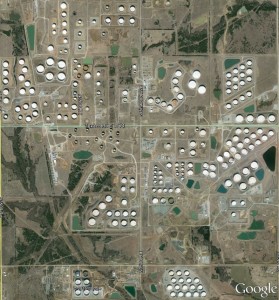Oklahoma oil and gas regulators are scrambling to deal with increasing seismic activity. The Oklahoma Corporation Commission ordered six wastewater disposal wells shut down after the state’s strongest earthquake since 2011, a magnitude-4.7 quake near Cherokee, close to the Kansas border. The quake was felt from Dallas to Kansas City. A second 4.0- quake was centered near Crescent, close to Oklahoma City. There were a total of eight earthquakes. The Commission also ordered the owners of 23 other wells to reduce injection rates by 25 to 50 percent.
Oklahoma regulators have now conceded that earthquakes there are caused by disposal wells, after much earlier debate. Oklahoma is now the most seismically active area of the country. The state has had more than 790 quakes of magnitude 3 or greater this year, compared to 585 last year.
Cherokee is in Alfalfa County, where 225 million barrels of waste water was disposed of last year, more than 10 times what was injected in 2010. It sits over the Mississippi Lime, an oil play that requires disposal of 10 barrels of water for every barrel of oil produced.
 Oil and Gas Lawyer Blog
Oil and Gas Lawyer Blog


